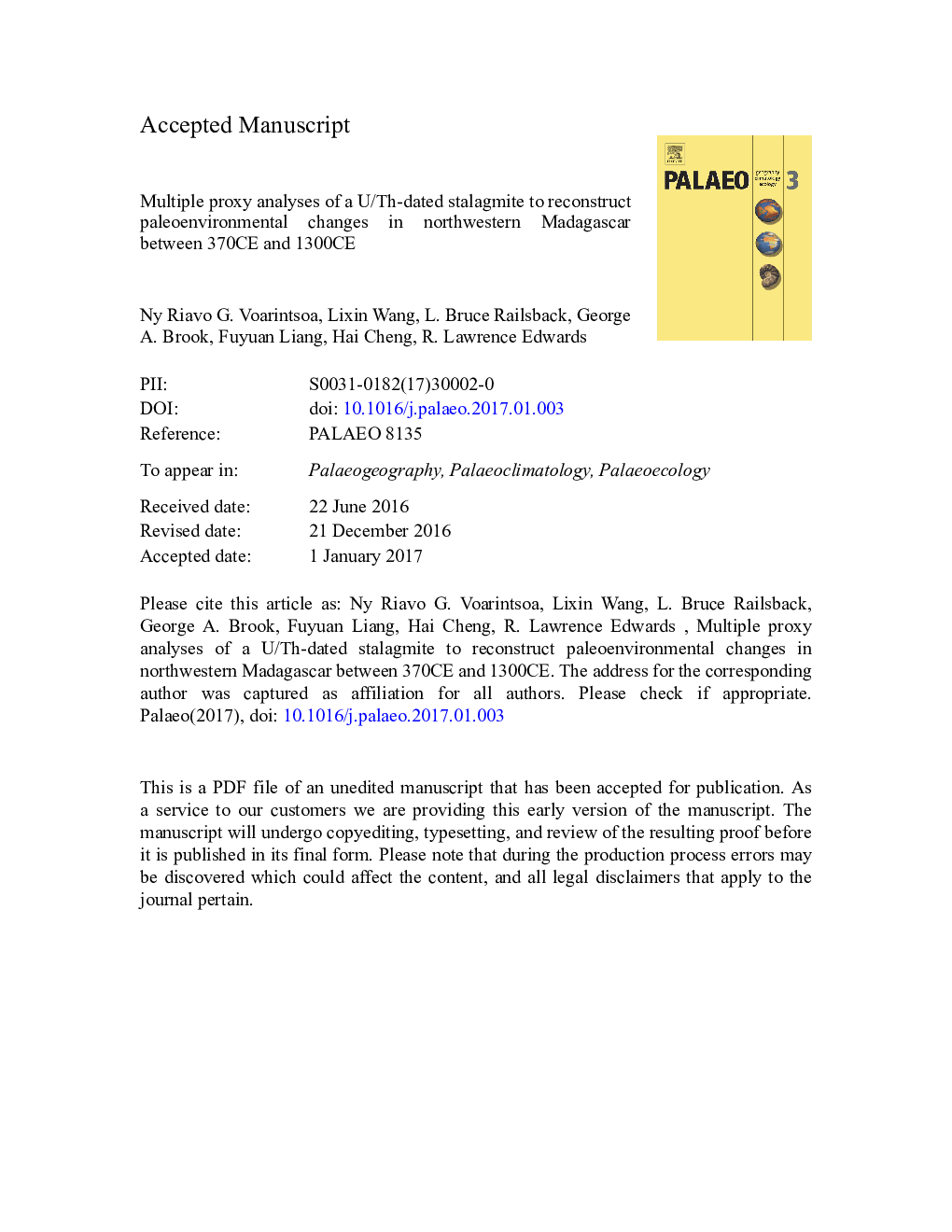| Article ID | Journal | Published Year | Pages | File Type |
|---|---|---|---|---|
| 5755726 | Palaeogeography, Palaeoclimatology, Palaeoecology | 2017 | 82 Pages |
Abstract
Detailed examination of the proxies suggests three distinct intervals of changes. (1) Prior to 795Â CE, changes in vegetation seem to have responded to changes in monsoonal rainfall linked to the relative position of the ITCZ. The period between ca. 755Â CE and 795 was the driest, and the Stalagmite MA3 record is consistent with sediment records (pollen and lithology) from Lake Mitsinjo, northwestern Madagascar, and with sediment records (fossil pollen and charcoal) from Sainte Luce, southeastern Madagascar. (2) Between 795Â CE and 870, the environmental conditions became more favorable, when vegetation recovered from the driest interval. The new conditions must have been suitable for community development in the region as suggested by archaeological evidence around Lake Mitsinjo and the Boeny region, and the establishment of the stone town of Mahilaka. (3) After 870Â CE, a gradational change in plant communities from C3 to C4 marks the record until around 1130Â CE, after which vegetation was dominated by C4 plants. This change cannot be explained by climate alone, as there is no clear relationship in the climate-sensitive proxies. Instead, it could have been caused by “Tavy”, a variety of “swidden” agriculture practiced in the region.
Related Topics
Physical Sciences and Engineering
Earth and Planetary Sciences
Earth-Surface Processes
Authors
Ny Riavo G. Voarintsoa, Lixin Wang, L. Bruce Railsback, George A. Brook, Fuyuan Liang, Hai Cheng, R. Lawrence Edwards,
